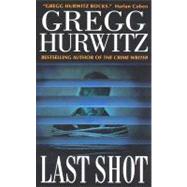
The New copy of this book will include any supplemental materials advertised. Please check the title of the book to determine if it should include any access cards, study guides, lab manuals, CDs, etc.
The Used, Rental and eBook copies of this book are not guaranteed to include any supplemental materials. Typically, only the book itself is included. This is true even if the title states it includes any access cards, study guides, lab manuals, CDs, etc.
The American Civil War began on April 12, 1861, when forces of the newly declared Confederacy fired on the Union garrison at Fort Sumter. At the time, the South had only one fighting ship, four small cutters, and a limited number of commercial vessels. Building facilities were limited to a few small yards in Florida and Virginia, and none had the capacity to build in the dimensions and materials needed for fighting ships. A few days after Fort Sumter surrendered, President Lincoln ordered the Union navy to initiate a blockade of all Southern ports, adding a proviso that any privateers caught sailing under Confederate colors would be jailed and hung.
Blockading more than three thousand miles of coastline was a colossal task, but the effort was largely successful and quickly began to have effects far beyond America's borders. In England, where 80 percent of the cotton consumed in that country's massive textile industry came from the Southern states, thousands of unemployed mill workers were thrown onto the streets. France, where the populace was laboring under the rule of Napoleon III, was in much the same boat. Within months the looms of England and Europe slowed nearly to a halt. Exports of cotton goods, which had reached a value of approximately a billion dollars in 1860, were almost choked off, and with the market so disrupted, the leaders of the Confederacy quickly realized that the war could not be won without a supply of ready cash.
Britain's prime minister, Lord Palmerston, firmly believed that a dissolution of the burgeoning, juvenile America was inevitable (and indeed, like many European heads of state, would probably have preferred such a thing) but nonetheless felt it would be unwise to interfere in the conflict. As a result, two weeks after the blockade began, England officially recognized the Confederacy as a belligerent and issued a proclamation outlining the principles of Britain's neutrality: Her Majesty's subjects were not to enlist in the armed forces of either side, break the blockade, or allow their ships to transport soldiers, military supplies, or dispatches for either side. They were further enjoined from building, arming, or outfitting any vessel that might be used as a ship of war.
Politically, Palmerston's desire for a hands-off policy was sound, but the forces of international trade quickly drove cracks into his country's presumed neutrality. Sniffing enormous profits, British ships began running the blockade with regularity, smuggling goods into the South which could be traded at extortionate rates for cotton that in turn would be nearly priceless in Europe. So great were the margins that captains of "moon chasers" operating out of Nassau in the Bahamas were often paid as much as $10,000 in gold for a single voyage, equal to nearly $160,000 today.
Lucrative as it was, however, the amount of cotton the blockade runners could get through the Union stranglehold was insufficient to supply Europe's needs. In June Lord Palmerston wrote to England's foreign minister, John Russell:
This cotton question will most certainly assume a serious character by the beginning of next year; and if the American civil war has not by that time come to an end, I suspect that we shall be obliged either singly or conjointly with France to tell the northerners that we cannot allow millions of our people to perish to please the Northern States.In return the foreign minister proposed that England team up with France early in the coming year to act "on a grand scale" to force terms on the Americans. Ever cautious about antagonizing a nation as strong as the muscular young America, Palmerston rejected the notion of overtly threatening war and replied that "the only thing to do seems to be to lie on our oars, and give no pretext to the Washingtonians to quarrel with us."
Large and powerful as the Federal navy was, it did not have enough ships to both maintain the blockade and protect the Union's own trade routes.* To exploit this weakness, Confederate leaders developed a plan to obtain and arm a number of raiders, voracious, fast-moving predators meant to swoop down on slow-moving Yankee merchant vessels and sink them. In addition to disrupting the Northern economy, the tactic would also force the Union navy to withdraw critical fighting ships from blockade duty to pursue the raiders, leaving the coastline more porous for smugglers. Because the Confederacy was hampered by the lack of shipyards, obtaining foreign-built vessels was the key to the plan. And doing so was the work of one man.
Last Shot. Copyright © by Gregg Hurwitz. Reprinted by permission of HarperCollins Publishers, Inc. All rights reserved. Available now wherever books are sold.
Excerpted from Last Shot by Gregg Andrew Hurwitz
All rights reserved by the original copyright owners. Excerpts are provided for display purposes only and may not be reproduced, reprinted or distributed without the written permission of the publisher.